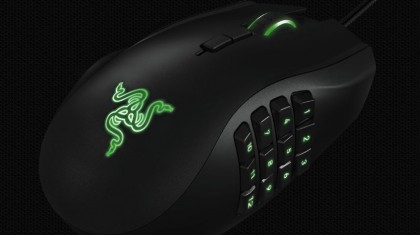Where hardware meets software: Razer CEO talks going 2.0
It's the hardware 2.0 era. We're just living in it

It's not enough to be "just" a hardware company or "only" a software maker these days. Welcome to the hardware 2.0 era, where Apple is buying Beats, Nest is perched at Google and Oculus is packing its virtual bags for Facebook.
"We are seeing the rise of hardware 2.0 companies," Razer CEO Min-Liang Tan said in a recent interview with TechRadar. "It's not about the companies of the past, moving boxes - the Dells and IBMs of days gone by."
Hardware is the new software, Tan proclaimed.
"With hardware, there's no time for iteration," he said over Skype. "Software is all about changing things on the fly and iterating. Inherently, there's always this tension between hardware and software releases."
- Razer Blade is among one of the best gaming laptops – check it!
Our discussion had started simply enough; talk about Razer's software side, a sort-of out in the open yet still behind the scenes aspect to the Blade maker's more public green-and-black hardware endeavors.
But as the conversation picked up, Tan expounded on what being a hardware 2.0 company means for Razer.
"We approach hardware from a software angle," he said. "We don't have a problem killing a product and changing things. This ability allows us to succeed in hardware and software."
Sign up for breaking news, reviews, opinion, top tech deals, and more.
"We constantly iterate," he continued. "We're willing to start from scratch even if we've blown a million dollars. We focus on the gamer … and say, 'This is what gamers want from a software perspective, this is what gamers want from a hardware perspective.' It allows us to build better products from this perspective."
Create, rinse, repeat
Case in point: the Razer Naga, what Tan called the company's No. 1 MMO mouse.
"Most gamers swear by it," he said, but it wasn't always that way. It took 80 - 100 models and a few trashed finished products before Razer got the Naga right.

Aside from being willing to iterate and kill off what isn't working, Tan explained that for Razer, being a hardware 2.0 company means having software and hardware intimately tied to one another.
"It's the integration of hardware and software that has really provided the magic," he winked. Even Naga is "fully integrated and looped into the MMO themselves," and even has a WoW overlay.
Outside the mouse hole there's Synapse 2.0, Razer's cloud-based driver software that saves game settings on peripherals, lets them talk to one another, and more. Throw in Razer Comms, the company's growing VoIP and chat software service, and Razer Surround, and you get the message the company takes its software seriously.
"Synapse, Razer Comms and Razer Surround are all fully integrated into [our] gaming hardware," Tan said. "There's an incredible amount of software integration that goes into the platform."
Part of the reason Razer has done well in software and hardware is because it's laser focused on its particular vertical - gaming. Tan pointed to companies like Beats, which makes headphones and a music streaming service, and Jawbone as examples of other hardware 2.0 firms that are flourishing in their niches.
"We've had military and medical [companies] approach us to bring technology to them, [but] our focus on the gamer has been able why we have done hardware/software integration so well," he said.

Michelle was previously a news editor at TechRadar, leading consumer tech news and reviews. Michelle is now a Content Strategist at Facebook. A versatile, highly effective content writer and skilled editor with a keen eye for detail, Michelle is a collaborative problem solver and covered everything from smartwatches and microprocessors to VR and self-driving cars.